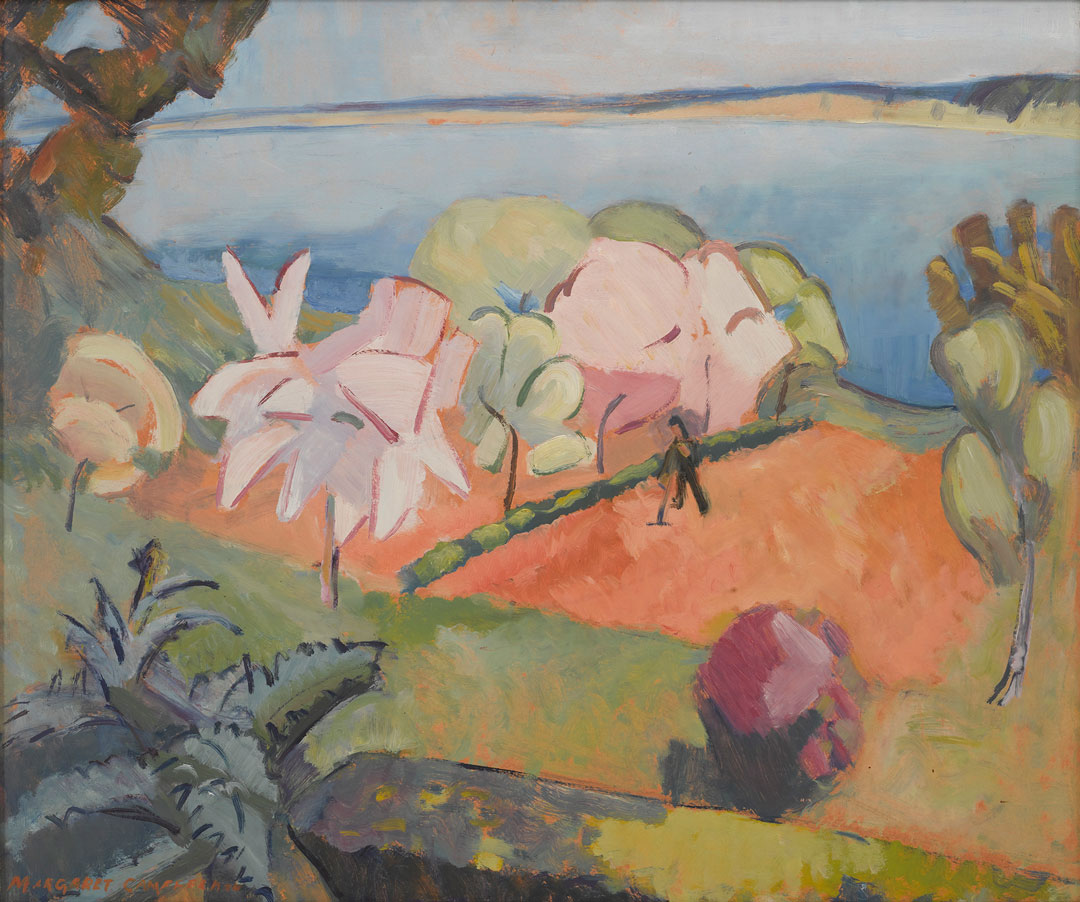SAM Creates: Drawing from Margaret Gove Camfferman

Margaret Gove Camfferman was an early Northwest modernist whose colors and compositions reveal her love of the Pacific Northwest landscape. The soft palette of colors, blooming trees, and gentle light on the Sound reveal as much about the painter in that moment as the scene she painted. To learn more about Landscape before starting this art activity, click here!
Create your own landscape inspired by Camfferman’s work by choosing a landscape to work from. You can work from real life, a photograph, or an imagined landscape. For materials, you will need paper, pencil, and—if available—any kind of paint, pastels, crayons, or markers to add color.
Once you find your inspiration, start by completing some thumbnail sketches. Draw a series of little boxes on your paper and experiment with your composition. Keep it loose, and draw the scene in a few different ways. Compose in both portrait and landscape formats to see what is most effective.
To create the illusion of space in your work, start by thinking about where the horizon line is. In Camfferman’s Landscape the horizon line is in the upper third of the painting, and her vanishing point is obscured by the tree in the upper left corner. She uses them as tools in her composition to provide the illusion of space.
As you’re sketching, think about what objects are in the foreground (closest to you), middle ground, and background (furthest from you). Objects in the foreground are larger than objects in the middle or background in order to make them appear closer to you.
After finding a composition you like, translate it into a larger drawing; you can still work fairly small if you want—think of this as a study. In pencil, draw the basic shapes in the landscape, leaving out the details.
Now, add color: setting up your palette in advance can help you control the mood and tone of your composition. Working with a limited palette of colors that relate to one another creates harmony in the work. If you need inspiration, check out Coolors for samples of warm, cool, pastel, or vintage color palettes. Like Camfferman, skip the details and try using planes of color to create form and volume in your landscape.
After you’ve laid down some of the larger shapes, add some finer lines to help tell your story.
Take this further by creating a series of works, recording the daily changes in nature and the landscape we live in. Share your work with us using the hashtag #StayHomeWithSAM.
– Kelsey Donahue, SAM Assistant Manager for Gallery Learning & Lynda Harwood-Swenson, SAM Assistant Manager for Studio Programs